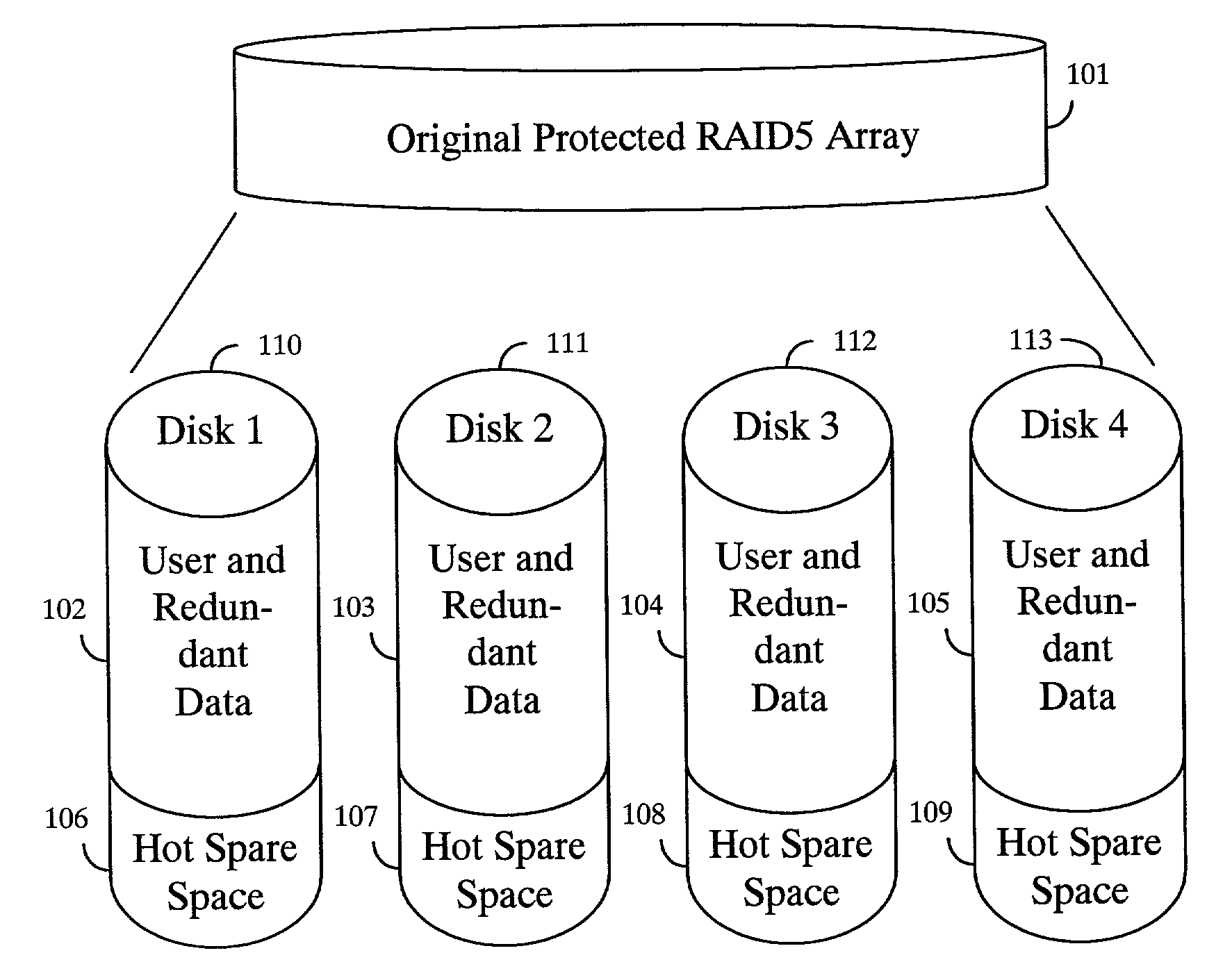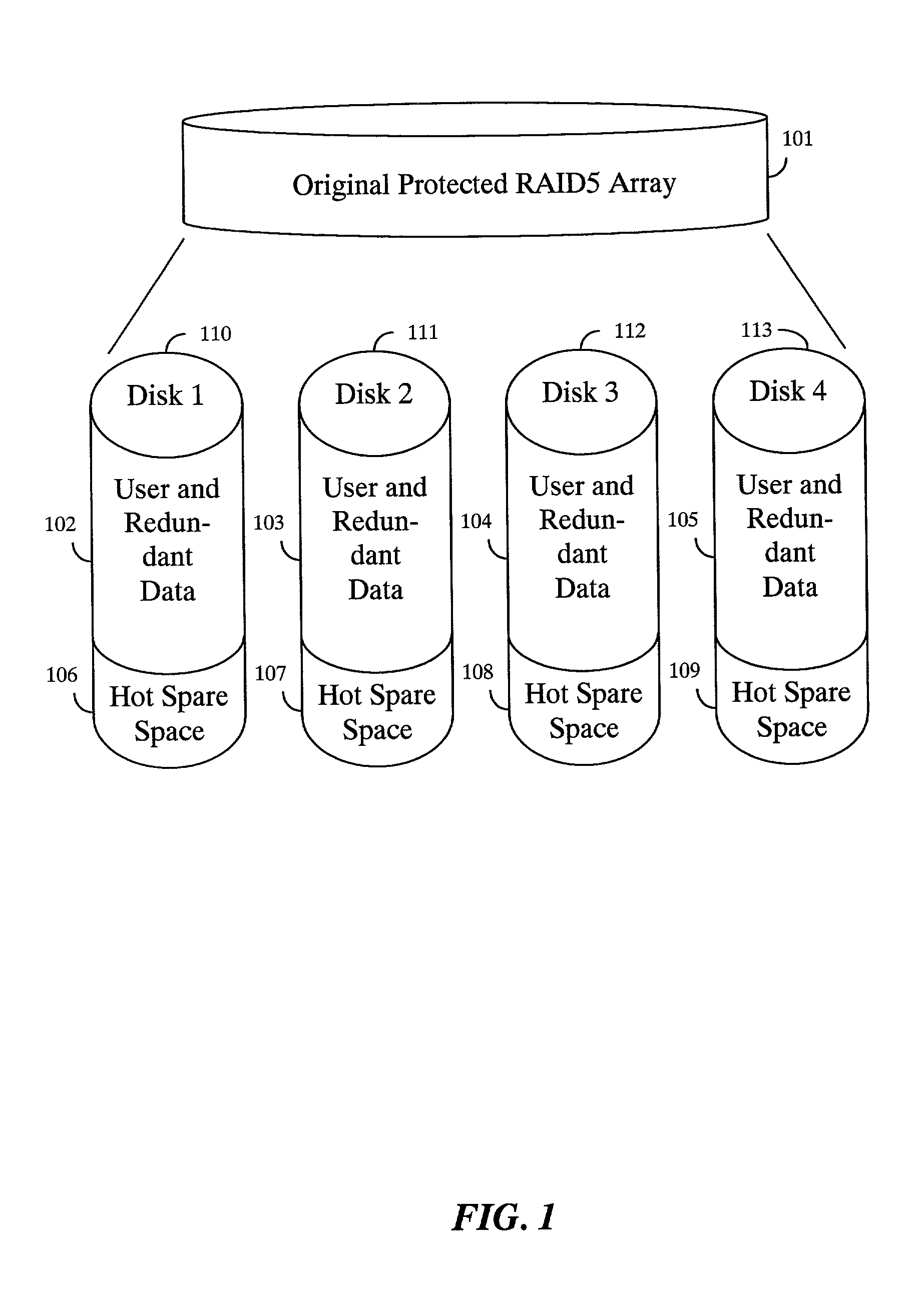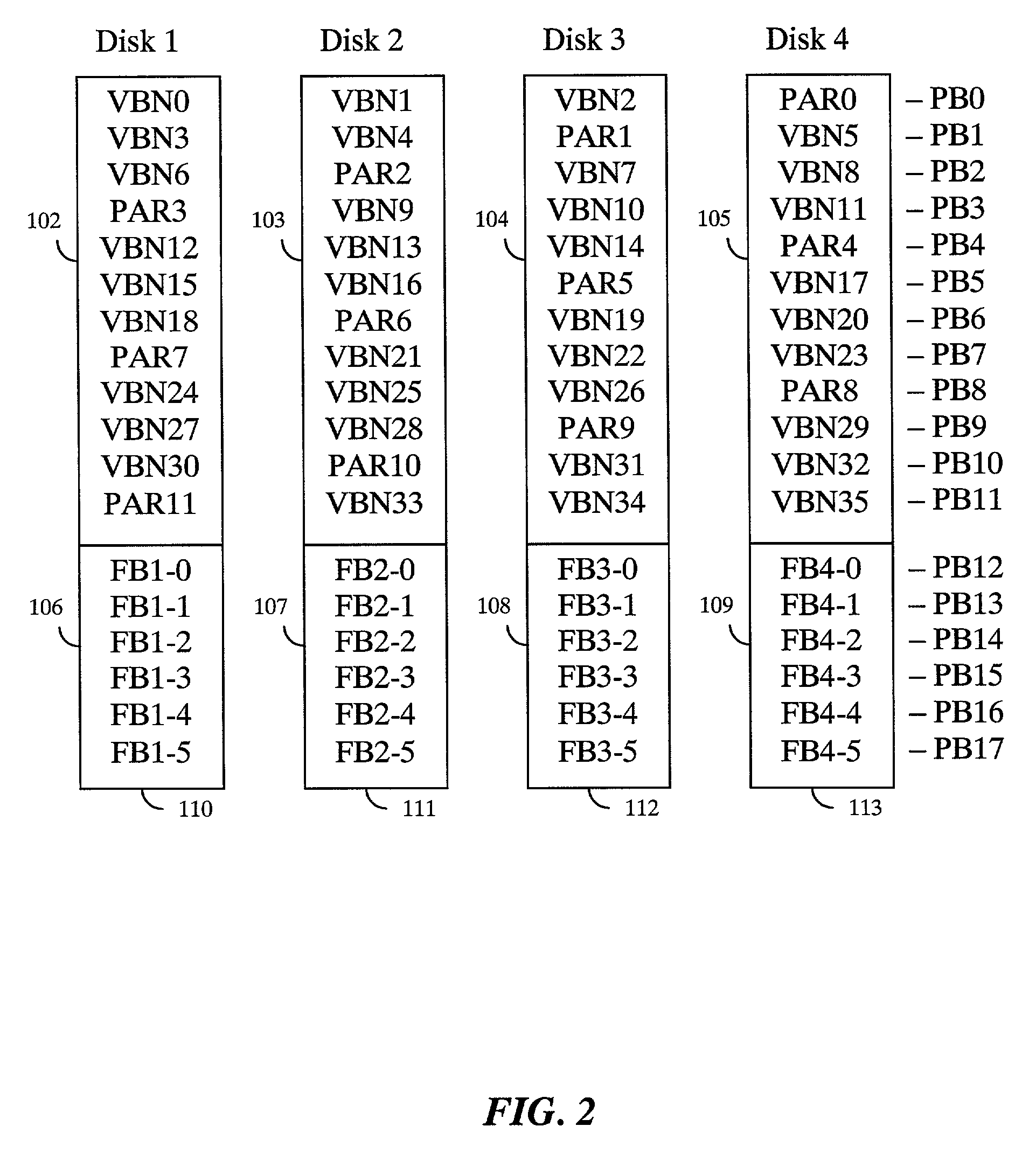Rebuilding redundant disk arrays using distributed hot spare space
a hot spare space and array technology, applied in the field of disk storage subsystems, can solve the problems of arrays that had a disk drive failure at the same redundancy level, arrays that had a disk drive failure, etc., and achieve the effect of performing faster
- Summary
- Abstract
- Description
- Claims
- Application Information
AI Technical Summary
Benefits of technology
Problems solved by technology
Method used
Image
Examples
Embodiment Construction
Configuring and Allocating a Redundant Array of Independent Disks
[0021]FIG. 1 shows an example RAID5 array 101 using four disk drives 110–113 with partitions configured and allocated according to the invention. The array 101 is configured by allocating user and redundant data partitions 102–105 and hot spare space partitions 106–109 distributed over all four disk drives in active use. The hot spare space partitions are used in the event of a disk failure.
[0022]FIG. 2 shows block level details of the allocations of various partitions 102–109 of the disk drives 110–113. Each disk drive has, for example, eighteen physical blocks that are labeled on the right as PB0–PB17. The RAID5 array, presents the data to the user by mapping blocks accessed by the user to the physical blocks on the disk drive. Those blocks are known as virtual blocks, each having a virtual block number labeled VBN0–VBN35 for an array of thirty-six virtual blocks.
[0023]The RAID5 array also generates and maintains red...
PUM
 Login to View More
Login to View More Abstract
Description
Claims
Application Information
 Login to View More
Login to View More - R&D
- Intellectual Property
- Life Sciences
- Materials
- Tech Scout
- Unparalleled Data Quality
- Higher Quality Content
- 60% Fewer Hallucinations
Browse by: Latest US Patents, China's latest patents, Technical Efficacy Thesaurus, Application Domain, Technology Topic, Popular Technical Reports.
© 2025 PatSnap. All rights reserved.Legal|Privacy policy|Modern Slavery Act Transparency Statement|Sitemap|About US| Contact US: help@patsnap.com



